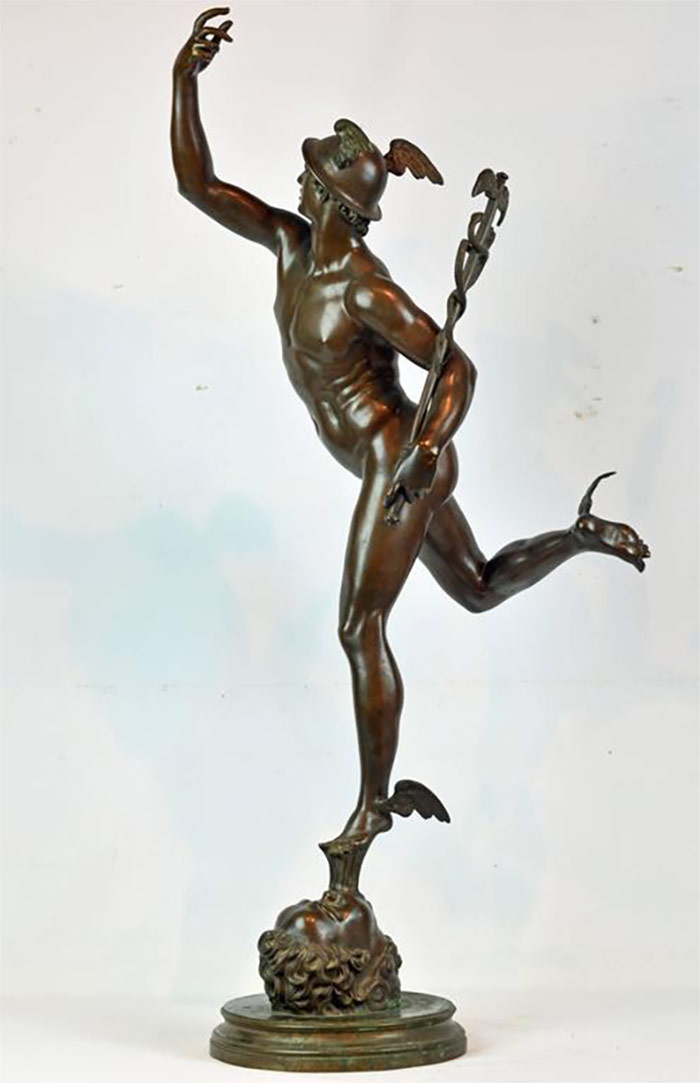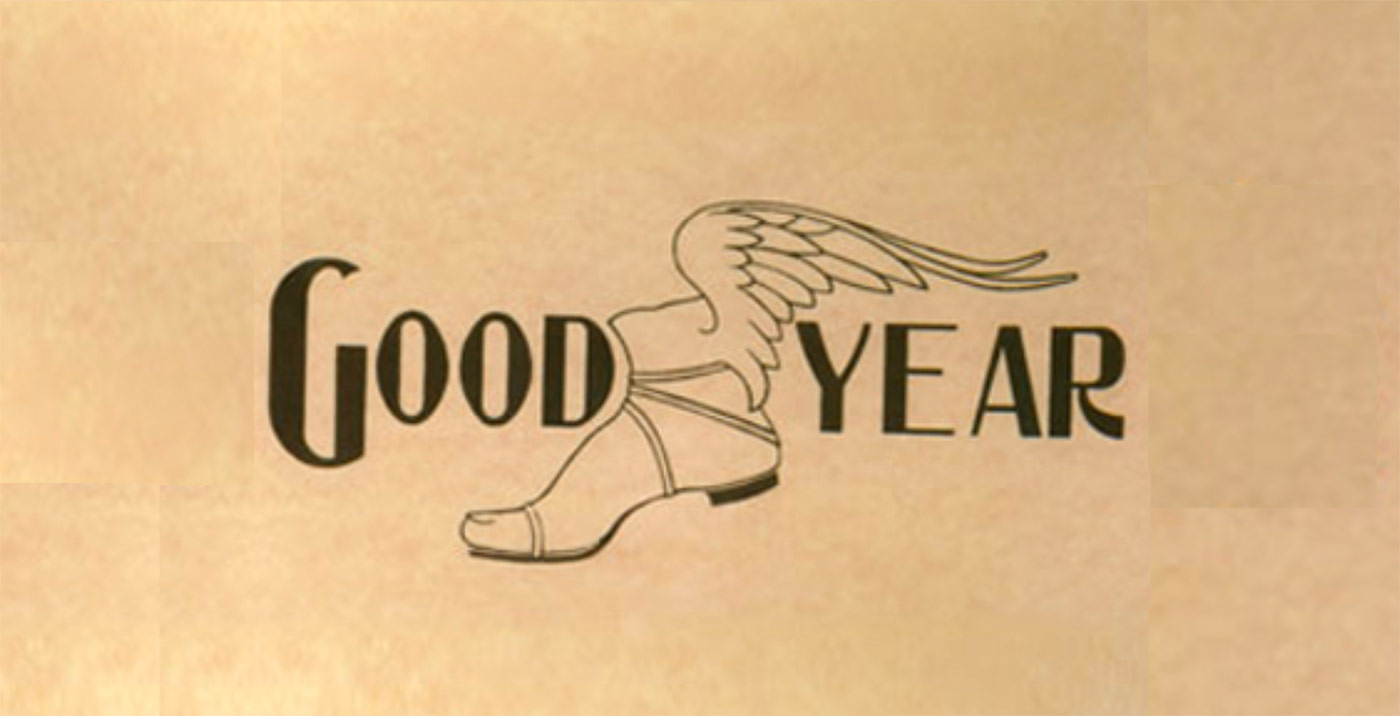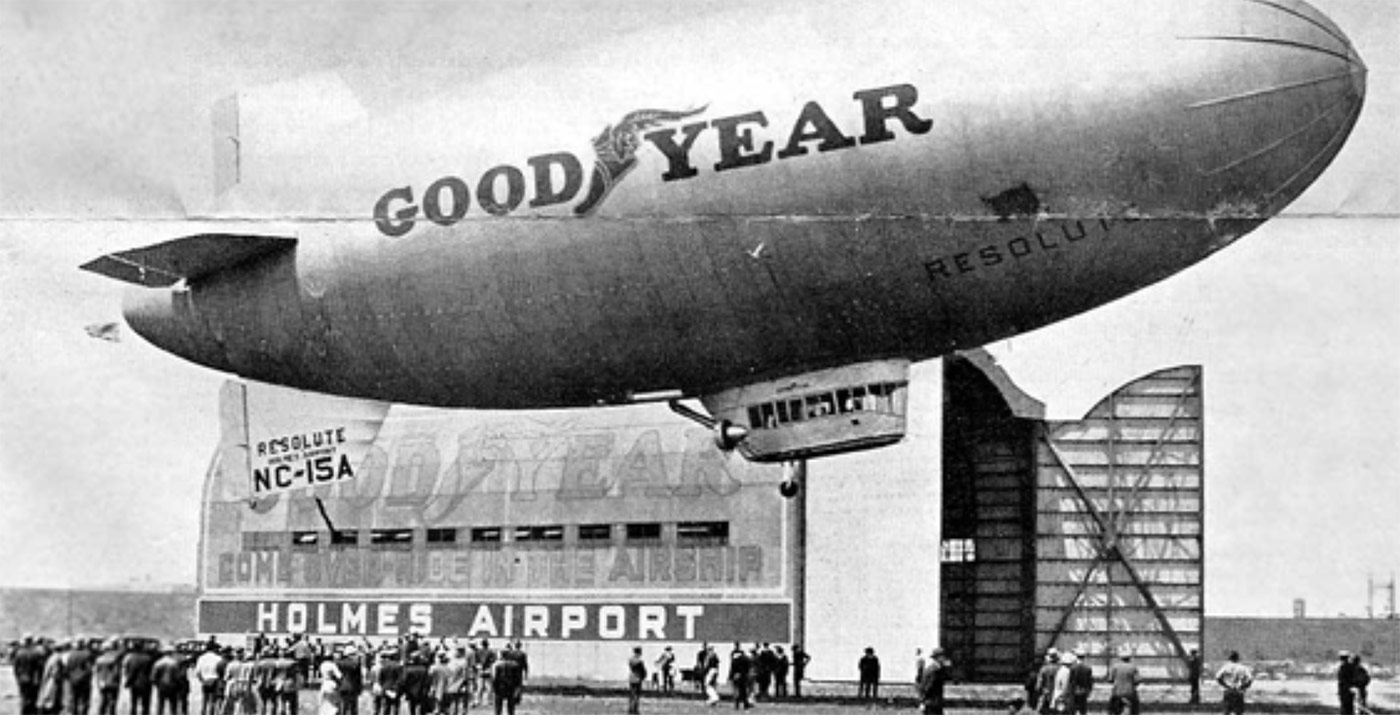The responsibility for the adoption of the Wingfoot symbol, now widely known around the world, rests to a great extent with Frank Seiberling, the founder and for many years president of The Goodyear Tire & Rubber Company.
In the old Seiberling home in Akron, Ohio, there stood a statue of Mercury, the Roman god (known to Greeks as Hermes).

The statue drew Seiberling’s attention, and he felt that the god it portrayed embodied many of the characteristics for which Goodyear products were known.
In August 1900, a meeting to discuss the idea of a suitable company trademark was held at the Seiberling home. At Seiberling’s suggestion, among the sketches that had been prepared for the meeting was one using the winged foot of Mercury.
Not surprisingly, given that it was the founder’s idea, everyone at the meeting agreed that the Wingfoot should be the company symbol, with the graphic to be placed in the middle of the word “Goodyear.” The original Wingfoot was much larger in relation to the brand name than the one we see today.

Mercury in ancient times was the god of trade and commerce, but it was the idea of speed that had much to do with Goodyear’s symbol selection, for the wingfooted Mercury was regarded as fast carrier of good news.

One of the world’s best known advertising icons, the Goodyear Blimp, was first built in 1912. The military used them for observation and reconnaissance during World Wars I and II. After World War II, Goodyear bought five of its blimps back from the armed forces, painted them, and began using them for promotional purposes. But the company’s executives didn’t see the value of having blimps. In 1958 they tried to ground the airships permanently, to save the operating and maintenance expenses. More on that here.

